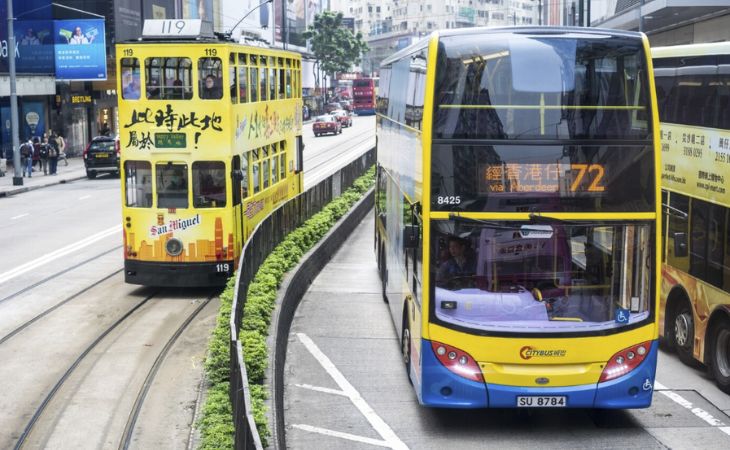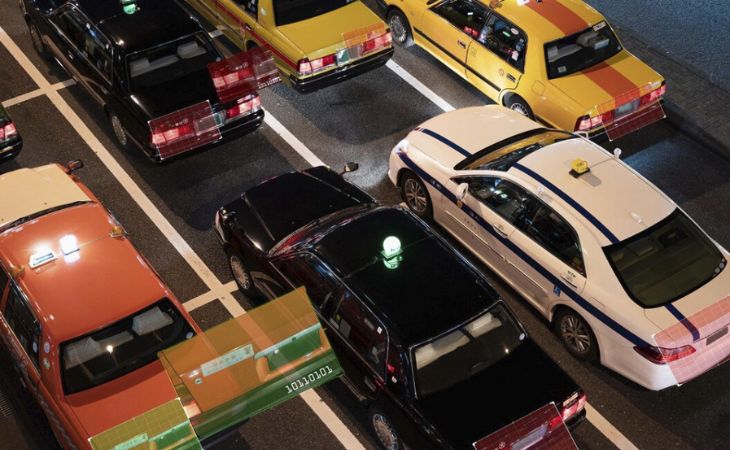
Regulations on Digital Signage on Mobile Vehicles
Digital signage has advanced from wall-mounted displays and free-standing units to being placed atop mobile vehicles. All of us have seen it at one point — a brightly flashing LED screen sitting on top of a car, catching the attention of other motorists and pedestrians as it cruises the roads.
While digital signage on mobile vehicles is gaining popularity, some have spoken up about their concerns about it posing a public safety hazard. In this article, we discuss the growing use of on-vehicle digital signage, reveal public safety concerns surrounding it, and explore regulations that govern its application.
Applications of On-Vehicle Digital Signage
On-vehicle digital signage presents an out-of-home marketing solution, allowing companies to expand their reach with LED messaging. We’re seeing the trend take place more prominently in urban areas, with dynamic signage commonly placed atop the following vehicles.
Taxis
Taxicabs are the most common you’ll see sporting digital signage on their roofs. However, this isn’t new — taxicabs have already adopted analog digital signage long before it was a trend to indicate whether they were available for hire.
In recent years, however, these analog signs have advanced to become on-vehicle digital signage to advertise local businesses. Some taxis even have in-vehicle screens positioned on the backseat for passengers to peruse.
Public Transit Buses

Public transit buses boast real estate that’s long been used for static advertising. From body decals to stickers, buses have been favorites for businesses looking to spread the word about their products and services.
From traditional signs, buses have transitioned to more dynamic digital signage to increase appeal and advertising revenue. Most public buses also sport in-vehicle screens that relay information on bus routes, traffic updates, weather conditions, etc.
Special-Use and Event Vehicles
Although not as common as in taxis and buses, private vehicles are also beginning to install on-vehicle digital signage. From trucks and vans to SUVs and sedans, companies are using their fleet to deliver their ads and messages to pedestrians and other motorists.
First Responder Vehicles
In the future, we may begin to see on-vehicle digital signage atop first responder vehicles, such as police cars, ambulances, and fire trucks. They’re mostly going to be used for public safety and information messaging but in some instances may also feature brand advertisements.
Public Safety Concerns About On-Vehicle Digital Signage
On-vehicle digital signage has emerged as a powerful platform for businesses to engage in out-of-home advertising, increasing their reach and attracting their audience. However, there are concerns stemming from law enforcement agencies who expressed that these flashing displays are hindrances to public safety.
Specifically, they are criticized for reducing the effectiveness of emergency vehicle lights, road signs, and road indicators. Since they draw attention, they could take a driver’s eyes off the road and lead to accidents.
Regulations on Digital Signage on Mobile Vehicles

Because of the safety concerns surrounding on-vehicle digital signage, some governments have regulated the use of mobile billboards. The Los Angeles City Attorney’s Office, for example, has actively reminded businesses of the illegality of operating DMS devices as per city law.
While no hard rules are in place regarding installing digital signage on mobile vehicles, businesses have addressed public safety concerns through efforts like “suppressing motion graphics when the display is not pedestrian curb-facing, or when vehicles are on non-pedestrian roadways”, according to Lou Giacalone Jr, a pioneer in digital transit advertising.
Giacalone also notes that regulations may begin to appear in the future, which would increase the complexity of operating digital signage on mobile vehicles.
The Verdict on Digital Signage on Mobile Vehicles
On-vehicle digital signage presents a great opportunity for businesses to reach the out-of-home audience and deliver better viewer and geographic targeting. This benefit, however, should be looked at side by side with public safety concerns and regulatory issues.
Despite that, businesses are calling out for the advancement of on-vehicle digital signage for commercial, public benefit, and safety applications.
Exploring digital signage for your mobile vehicles? Meet advertising and safety demands with reliable software. Start a free trial of the Rise Vision free digital signage software solution.
More From Our Blog
-

Top Trends in Digital Signage Display Technology for 2025
Digital signage technology is evolving rapidly, with new innovations emerging every year. In this rapidly evolving landscape, businesses must adapt quickly to keep up with the latest advancements in[…]
Read More -

Screen Sharing for Workplace Collaboration | Rise Vision
Screen-sharing technology has transformed how teams communicate and work together in real-time, regardless of their location. It can make presentations more engaging, support remote work, and speed[…]
Read More -

How to Use PowerPoint for Digital Signage
To create stunning, attention-grabbing, and effective digital signage content, you need the help of content creation and presentation tools. One of the most popular is Microsoft PowerPoint, owing to[…]
Read More
Keep Your Displays Interesting – Pick New Templates Every Week!
Every week, we send template recommendations that will make you look great and improve your audience experience. And the best part, they save up to 16 hours of content creation time every week!
12,300+ Organizations Trust Rise Vision, You Can Too
Schedule a Free Demo
You deserve the #1 all-in-one platform for digital signage, screen sharing, and emergency alerts.



































